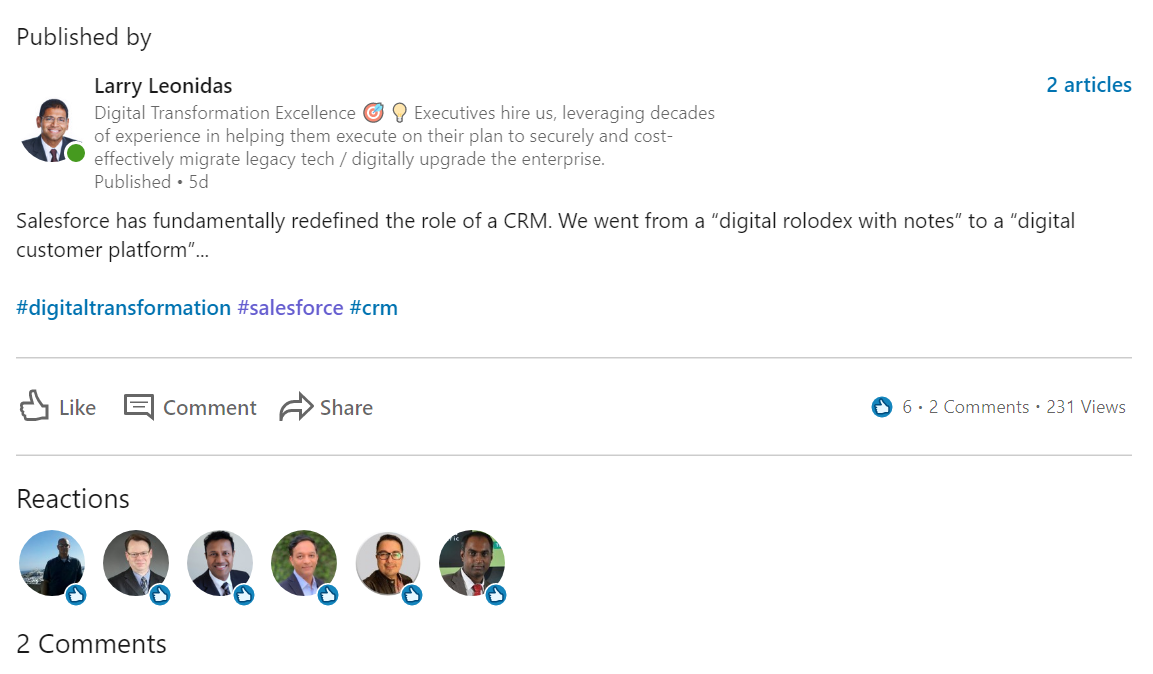Over the past 10 years or so Salesforce has fundamentally redefined the role of a CRM. We went from a “digital rolodex with notes” to a “digital customer platform”. That latter notion, however, has run into a significant hurdle in that existing enterprise ecosystems lacked the skills and advances in practices needed to successfully and/or wholly make the transition.
The evolution of technology in the past decade has, in turn, necessitated the evolution of technology within the enterprise. Migrating, upgrading, and, now, “transformation” have all become a must have. This is primarily due to advances in consumer technology and the resulting evolution of customers' digital sophistication. Industries and their corresponding competitive landscapes shifted to better and provide value to those customers. Salesforce, through some great timing and marketing, placed itself at the center of this shift. By embracing the SaaS cloud model early and developing an intuitive platform paired with declarative and programmatic customization (essentially point-and-click and custom code, respectively), Salesforce provided organizations with the capability to build a digital platform that can manage and connect with customers in a truly digital and transformative way, all with higher velocity of implementation.
Yet “Rome was not built in a day”. The existing ecosystems and practices cultivated by the legacy enterprise (skillsets, processes, and vendors) were playing catch up in terms of establishing an effective plan on how to implement Salesforce and successfully executing on it. As a result, a slight stigma of failure is often associated with the Salesforce platform itself. Issues like poor sales effectiveness, lack of adoption, overall failed implementations, etc. have surfaced. In reality, although Salesforce does have its limitations (I.e. Governor Limits, Release Schedules, etc.), the platform is indeed powerful and is, usually, not the culprit. Rather, our estimation is that organizations are often unprepared for how different Salesforce from traditional systems. Change culture, technical maturity, lack of planning, skills deficit etc. are often compound the issue digital transformation related issues. As a starting point, you can mitigate this with some fundamental guidelines, regardless of what stage you’re at with Salesforce (in order):
- Balance – Customize both “declaratively” and “programmatically”
- Scope – Not everything belongs in Salesforce
- Design – It's “Business-First, Technology-Second”
Obviously, more is needed for a future state of success. But, if adopted early and meaningfully, these guidelines can ensure a solid foundation, on which the platform can stand.
